CAT Exam > CAT Tests > Daily Test for CAT Preparation > CAT Previous Year Questions: Data Caselets- 1 (June 20) - CAT MCQ
CAT Previous Year Questions: Data Caselets- 1 (June 20) - CAT MCQ
Test Description
10 Questions MCQ Test Daily Test for CAT Preparation - CAT Previous Year Questions: Data Caselets- 1 (June 20)
CAT Previous Year Questions: Data Caselets- 1 (June 20) for CAT 2025 is part of Daily Test for CAT Preparation preparation. The CAT Previous Year Questions: Data Caselets- 1 (June 20) questions and answers have been
prepared according to the CAT exam syllabus.The CAT Previous Year Questions: Data Caselets- 1 (June 20) MCQs are made for CAT 2025 Exam. Find important
definitions, questions, notes, meanings, examples, exercises, MCQs and online tests for CAT Previous Year Questions: Data Caselets- 1 (June 20) below.
Solutions of CAT Previous Year Questions: Data Caselets- 1 (June 20) questions in English are available as part of our Daily Test for CAT Preparation for CAT & CAT Previous Year Questions: Data Caselets- 1 (June 20) solutions in
Hindi for Daily Test for CAT Preparation course. Download more important topics, notes, lectures and mock
test series for CAT Exam by signing up for free. Attempt CAT Previous Year Questions: Data Caselets- 1 (June 20) | 10 questions in 10 minutes | Mock test for CAT preparation | Free important questions MCQ to study Daily Test for CAT Preparation for CAT Exam | Download free PDF with solutions
*Answer can only contain numeric values
CAT Previous Year Questions: Data Caselets- 1 (June 20) - Question 1
How many UK applications were scheduled on that day?
Detailed Solution for CAT Previous Year Questions: Data Caselets- 1 (June 20) - Question 1
*Answer can only contain numeric values
CAT Previous Year Questions: Data Caselets- 1 (June 20) - Question 2
What is the maximum possible value of the total time (in minutes, nearest to its integer value) required to process all applications in the Others category on that day?
Detailed Solution for CAT Previous Year Questions: Data Caselets- 1 (June 20) - Question 2
CAT Previous Year Questions: Data Caselets- 1 (June 20) - Question 3
Which of the following is the closest to the time when Nandini’s application process got over?
Detailed Solution for CAT Previous Year Questions: Data Caselets- 1 (June 20) - Question 3
CAT Previous Year Questions: Data Caselets- 1 (June 20) - Question 4
Which of the following statements is false?
Detailed Solution for CAT Previous Year Questions: Data Caselets- 1 (June 20) - Question 4
CAT Previous Year Questions: Data Caselets- 1 (June 20) - Question 5
When did the application processing for all US applicants get over on that day?
Detailed Solution for CAT Previous Year Questions: Data Caselets- 1 (June 20) - Question 5
CAT Previous Year Questions: Data Caselets- 1 (June 20) - Question 6
Who are Gowtham’s acquaintances?
Detailed Solution for CAT Previous Year Questions: Data Caselets- 1 (June 20) - Question 6
CAT Previous Year Questions: Data Caselets- 1 (June 20) - Question 7
Who is an acquaintance of Amudha?
Detailed Solution for CAT Previous Year Questions: Data Caselets- 1 (June 20) - Question 7
*Answer can only contain numeric values
CAT Previous Year Questions: Data Caselets- 1 (June 20) - Question 8
How many friends does Ezhil have?
Detailed Solution for CAT Previous Year Questions: Data Caselets- 1 (June 20) - Question 8
CAT Previous Year Questions: Data Caselets- 1 (June 20) - Question 9
Which of these pairs share the same type of relationship?
Detailed Solution for CAT Previous Year Questions: Data Caselets- 1 (June 20) - Question 9
CAT Previous Year Questions: Data Caselets- 1 (June 20) - Question 10
Who is an acquaintance of Chandran?
Detailed Solution for CAT Previous Year Questions: Data Caselets- 1 (June 20) - Question 10
|
152 docs|327 tests
|
Information about CAT Previous Year Questions: Data Caselets- 1 (June 20) Page
In this test you can find the Exam questions for CAT Previous Year Questions: Data Caselets- 1 (June 20) solved & explained in the simplest way possible.
Besides giving Questions and answers for CAT Previous Year Questions: Data Caselets- 1 (June 20), EduRev gives you an ample number of Online tests for practice


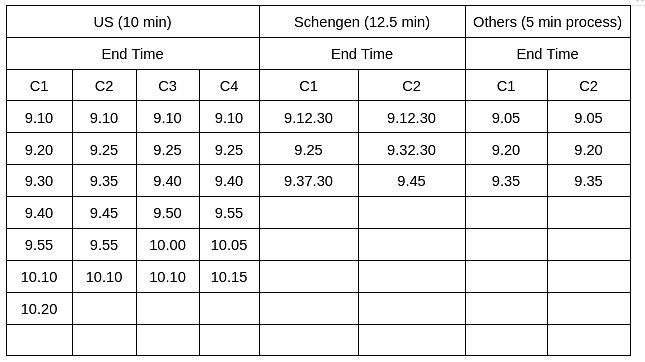
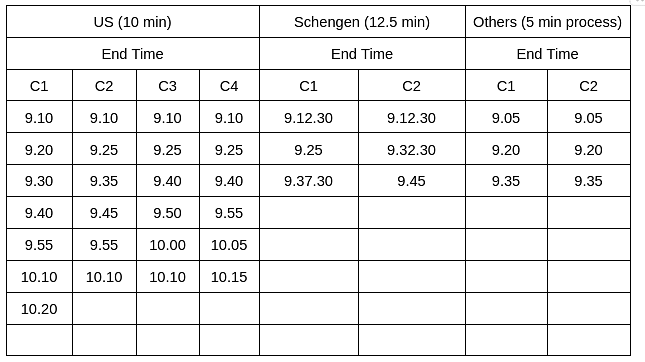

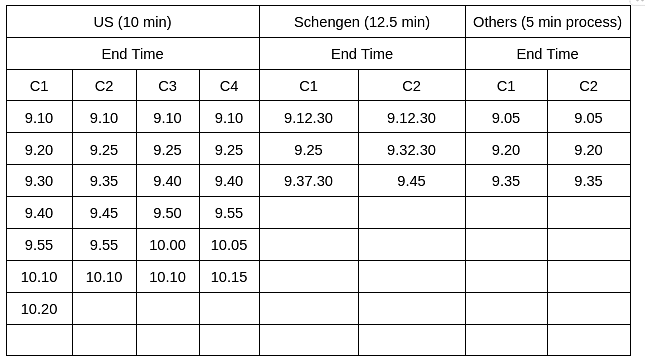
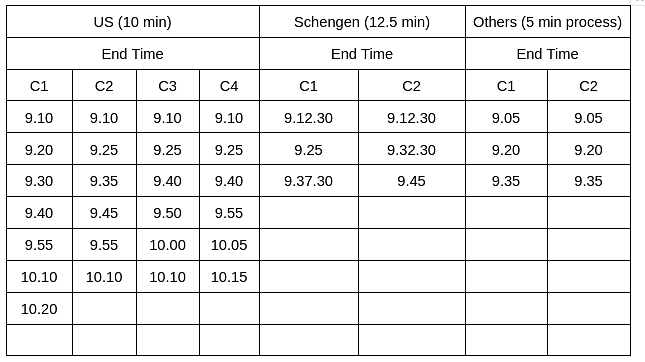
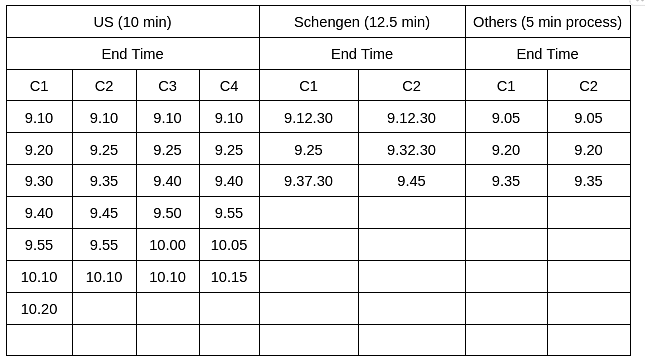

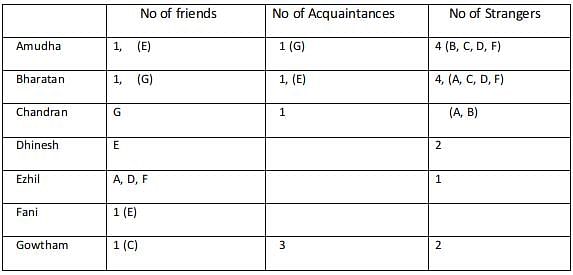
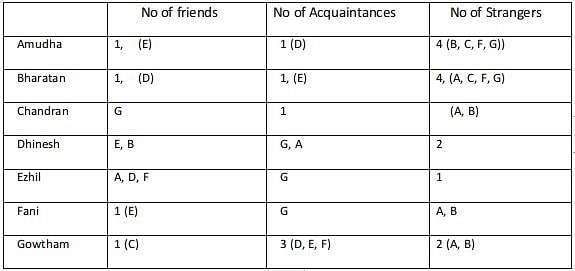

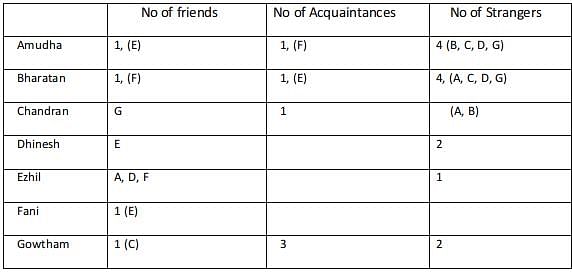
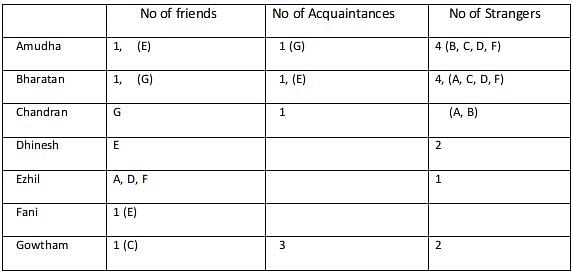
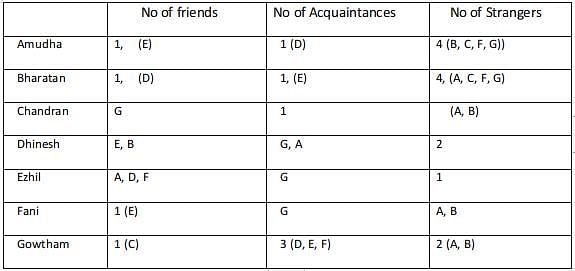
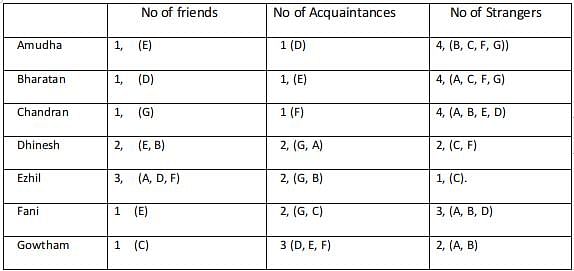 Dhinesh is an acquaintance of Amudha
Dhinesh is an acquaintance of Amudha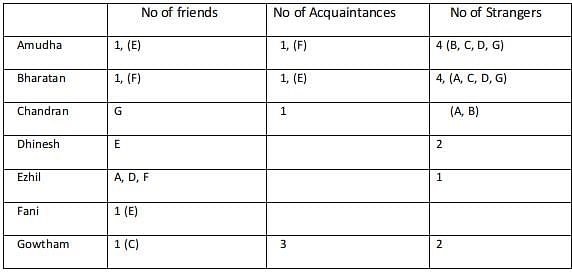
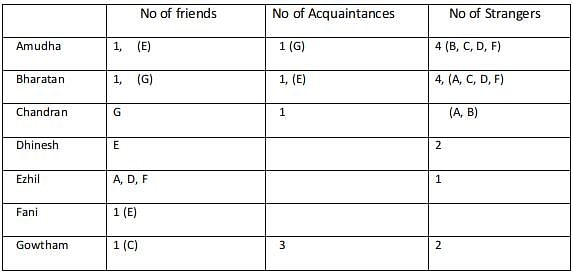
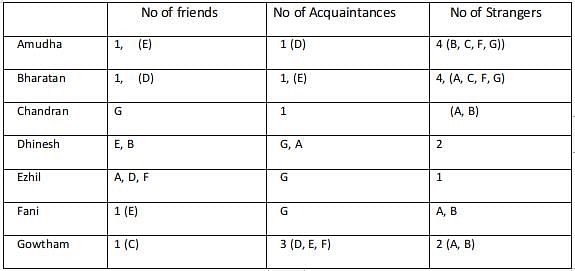
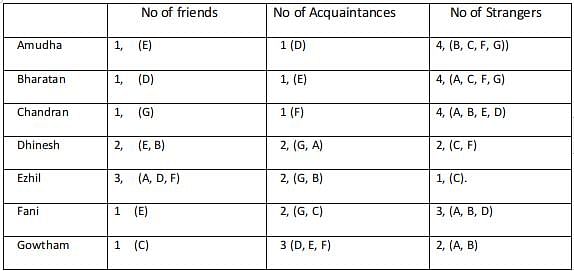 Ezhil has a total of 3 friends.
Ezhil has a total of 3 friends.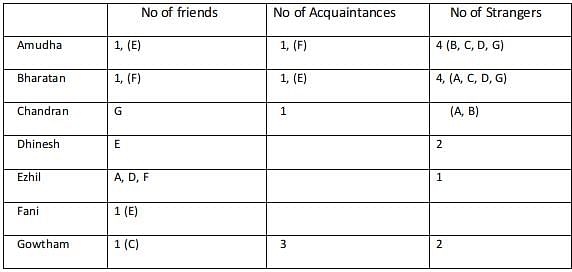
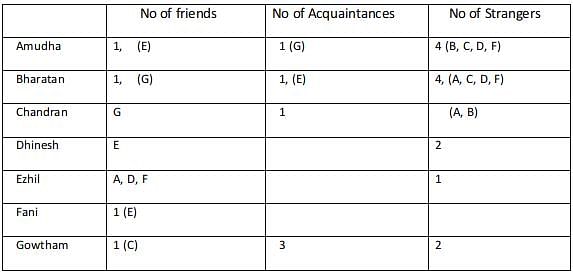
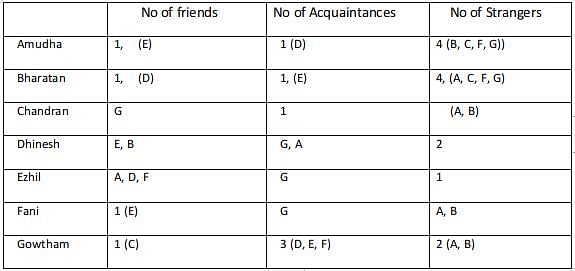
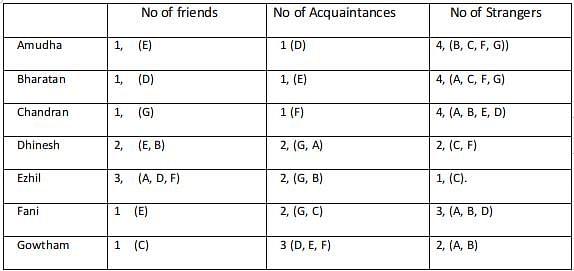 In the given options Bharatan and Ezhil are Acauaintances, Fani and Gowtham are acquaintances.
In the given options Bharatan and Ezhil are Acauaintances, Fani and Gowtham are acquaintances.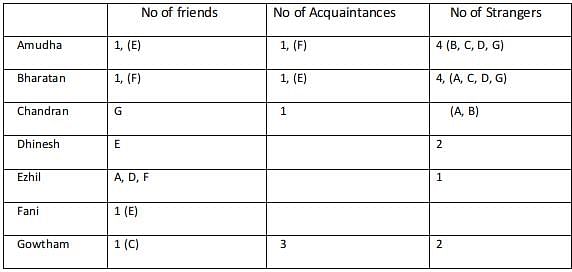


 Fani is an acquaintance of Chandran
Fani is an acquaintance of Chandran














